Decorative Concrete Engraving in Sarasota
Explore our featured Decorative Concrete Contractors in Sarasota
What is Decorative Concrete
Decorative concrete is a versatile and aesthetically enhanced form of traditional concrete that combines functionality with visual appeal. It involves modifying plain concrete using various techniques to improve its appearance while maintaining its structural integrity.
Key Features
Decorative concrete transforms ordinary gray concrete into visually striking surfaces through the application of:
- Color: Using integral coloring, stains, or dyes
- Texture: Adding patterns, stamps, or exposing aggregates
- Finishes: Polishing, sealing, or overlaying
These modifications allow concrete to mimic the look of more expensive materials such as brick, stone, tile, wood, or marble.
Common Techniques
Several methods are employed to create decorative concrete:
Stamping: Imprinting patterns or textures into freshly poured concrete to resemble brick, stone, or other materials.
Staining: Applying acid-based or water-based stains to create rich colors and unique patterns.
Integral Coloring: Adding pigments during the mixing process to achieve uniform coloration throughout the concrete.
Overlays: Applying a thin layer of decorative concrete over existing surfaces to renew their appearance.
Polishing: Grinding and polishing the concrete surface to achieve a smooth, glossy finish.
Applications
Decorative concrete finds use in various settings:
- Residential: Driveways, patios, pool decks, and interior flooring
- Commercial: Retail spaces, restaurants, and office buildings
- Public areas: Sidewalks, plazas, and parks
- Architectural elements: Walls, fireplaces, and countertops
Benefits
- Durability: Maintains the strength and longevity of traditional concrete
- Versatility: Offers a wide range of design options and applications
- Cost-effectiveness: Provides the look of expensive materials at a lower cost
- Low maintenance: Easier to clean and maintain compared to some natural materials
- Customization: Allows for unique, personalized designs
Decorative concrete has gained popularity in recent years, with a 2022 survey indicating that 35% of residential property owners prefer stamped or stained concrete for patios and driveways Its ability to combine aesthetics with functionality makes it an attractive option for both residential and commercial projects.
Benefits of Decorative Concrete
Decorative concrete offers numerous advantages over traditional concrete and other flooring materials. Here are the key benefits:
Aesthetic Appeal
Decorative concrete provides a wide range of design possibilities, allowing for:
- Custom colors and patterns to match any architectural style or personal preference
- Realistic imitations of more expensive materials like stone, brick, or tile
- Unique artistic expressions through stenciling, engraving, or inlays
This versatility makes it suitable for both interior and exterior applications, enhancing the overall appearance of any space.
Durability and Longevity
One of the most significant advantages of decorative concrete is its durability:
- Resistant to heavy foot traffic, impacts, and abrasions
- Can withstand extreme weather conditions, making it ideal for outdoor use
- Properly sealed decorative concrete can last for decades with minimal maintenance
Cost-Effectiveness
Decorative concrete offers an excellent balance between aesthetics and affordability:
- Lower initial cost compared to natural stone, hardwood, or high-end tile
- Reduced long-term expenses due to its durability and low maintenance requirements
- Potential to increase property value by improving curb appeal
Versatility in Application
The adaptability of decorative concrete makes it suitable for various settings:
- Residential: Driveways, patios, pool decks, and interior flooring
- Commercial: Retail spaces, restaurants, and office buildings
- Industrial: Warehouses and manufacturing facilities
- Public spaces: Sidewalks, plazas, and parks
Low Maintenance
Decorative concrete is relatively easy to maintain:
- Requires only periodic cleaning and resealing to maintain its appearance
- Resistant to stains, mold, and mildew when properly sealed
- Easy to clean with simple sweeping and occasional mopping
Environmentally Friendly
Decorative concrete can be a sustainable choice:
- Often utilizes existing concrete slabs, reducing the need for new materials
- Can incorporate recycled materials in its composition
- Reflective surfaces can help reduce heat island effects in urban areas
Improved Safety
Some decorative concrete techniques can enhance safety:
- Textured finishes provide slip-resistance, especially important for wet areas
- Can incorporate glow-in-the-dark aggregates for improved visibility at night
By combining these benefits, decorative concrete offers a practical, attractive, and cost-effective solution for a wide range of applications, making it an increasingly popular choice for both residential and commercial projects.
Decorative Concrete vs. Traditional Concrete
Decorative concrete offers numerous advantages over traditional concrete and other flooring materials. Here are the key benefits:
Aesthetic Appeal
Decorative concrete provides a wide range of design possibilities, allowing for:
- Custom colors and patterns to match any architectural style or personal preference
- Realistic imitations of more expensive materials like stone, brick, or tile
- Unique artistic expressions through stenciling, engraving, or inlays
This versatility makes it suitable for both interior and exterior applications, enhancing the overall appearance of any space.
Durability and Longevity
One of the most significant advantages of decorative concrete is its durability:
- Resistant to heavy foot traffic, impacts, and abrasions
- Can withstand extreme weather conditions, making it ideal for outdoor use
- Properly sealed decorative concrete can last for decades with minimal maintenance
Cost-Effectiveness
Decorative concrete offers an excellent balance between aesthetics and affordability:
- Lower initial cost compared to natural stone, hardwood, or high-end tile
- Reduced long-term expenses due to its durability and low maintenance requirements
- Potential to increase property value by improving curb appeal
Versatility in Application
The adaptability of decorative concrete makes it suitable for various settings:
- Residential: Driveways, patios, pool decks, and interior flooring
- Commercial: Retail spaces, restaurants, and office buildings
- Industrial: Warehouses and manufacturing facilities
- Public spaces: Sidewalks, plazas, and parks
Low Maintenance
Decorative concrete is relatively easy to maintain:
- Requires only periodic cleaning and resealing to maintain its appearance
- Resistant to stains, mold, and mildew when properly sealed
- Easy to clean with simple sweeping and occasional mopping
Environmentally Friendly
Decorative concrete can be a sustainable choice:
- Often utilizes existing concrete slabs, reducing the need for new materials
- Can incorporate recycled materials in its composition
- Reflective surfaces can help reduce heat island effects in urban areas
Improved Safety
Some decorative concrete techniques can enhance safety:
- Textured finishes provide slip-resistance, especially important for wet areas
- Can incorporate glow-in-the-dark aggregates for improved visibility at night
By combining these benefits, decorative concrete offers a practical, attractive, and cost-effective solution for a wide range of applications, making it an increasingly popular choice for both residential and commercial projects.
Cost of Decorative Concrete in Sarasota
The cost of decorative concrete varies depending on several factors, but generally ranges from $8 to $28 per square foot in 2025. Here’s a breakdown of the costs and influencing factors:
Average Costs
- Basic decorative concrete: $8 to $12 per square foot
- Mid-range designs: $12 to $18 per square foot
- High-end, customized designs: $18 to $28+ per square foot
For specific applications:
- Stamped concrete patios: $3,200 to $7,600 for a 20’x20′ area
- Stamped concrete driveways: $6,900 to $10,400 for a 2-car driveway
- Stamped concrete walkways: $800 to $1,700 for a 4’x20′ area
Cost Factors
Several elements influence the final price of decorative concrete:
- Design Complexity: More intricate patterns and multiple colors increase costs
- Size and Shape: Larger areas or unusual shapes affect pricing
- Concrete Grade: Higher quality concrete costs more, typically between $100 and $150 per cubic yard for residential use
- Surface Preparation: Existing surface condition may require additional work, impacting costs
- Location: Labor and material costs vary by region
- Thickness: Thicker slabs, especially for driveways, increase material costs
- Reinforcements: Adding rebar or wire mesh for strength raises the price
Comparison to Other Materials
Decorative concrete is often more affordable than natural stone or pavers, but more expensive than plain concrete:
- Plain concrete: $5 to $10 per square foot
- Decorative concrete: $8 to $28 per square foot
- Pavers: $10 to $17 per square foot
Cost-Saving Tips
To manage costs while still achieving an attractive finish:
- Choose simpler patterns and fewer colors
- Accurately measure project dimensions to avoid overbuying
- Compare quotes from multiple contractors
- Consider local concrete suppliers to reduce transportation costs
While decorative concrete may have a higher upfront cost compared to plain concrete, its durability, low maintenance requirements, and aesthetic appeal often make it a cost-effective choice in the long run.

From Drab to Fab: Custom Decorative Concrete Flooring Makeovers in Sarasota
Transforming drab concrete floors into fabulous spaces involves several techniques and materials, offering a wide range of design possibilities. Here’s how you can achieve a
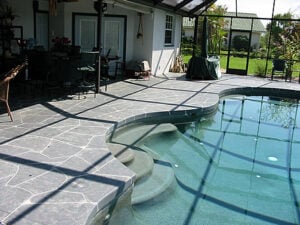
How to Maintain Your Decorative Concrete Pool Deck in Sarasota
Maintaining a decorative concrete pool deck in Sarasota involves several key steps to ensure it remains durable and visually appealing. Here are some effective methods
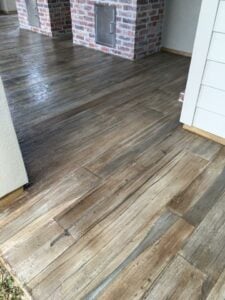
Decorative Concrete Sealing in Sarasota: Protecting Your Investment
Decorative concrete sealing in Sarasota is a crucial step in protecting your investment and enhancing the beauty of your concrete surfaces. Here’s why it’s essential:
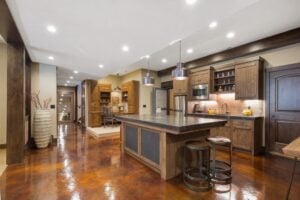
Sarasota Polished Concrete Floors Cost
Polished concrete floors in Sarasota are a cost-effective and durable flooring option, but understanding the pricing breakdown is essential for budgeting your project. Here’s what
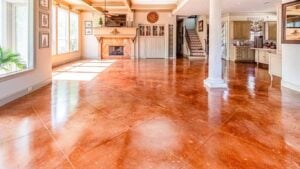
How to Maintain and Care for Your Custom Decorative Concrete Floors in Sarasota
Maintaining and caring for your custom decorative concrete floors in Sarasota is essential to ensure they remain beautiful and durable over time. Here are some
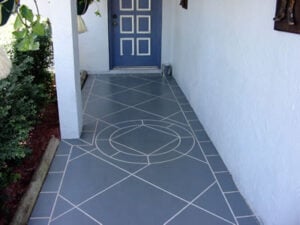
Stamped vs. Stained: Exploring Sarasota Decorative Concrete Resurfacing Options
Decorative concrete resurfacing Sarasota offers homeowners and businesses cost-effective ways to transform existing concrete surfaces. Two popular options are stamped and stained concrete. Let’s explore
